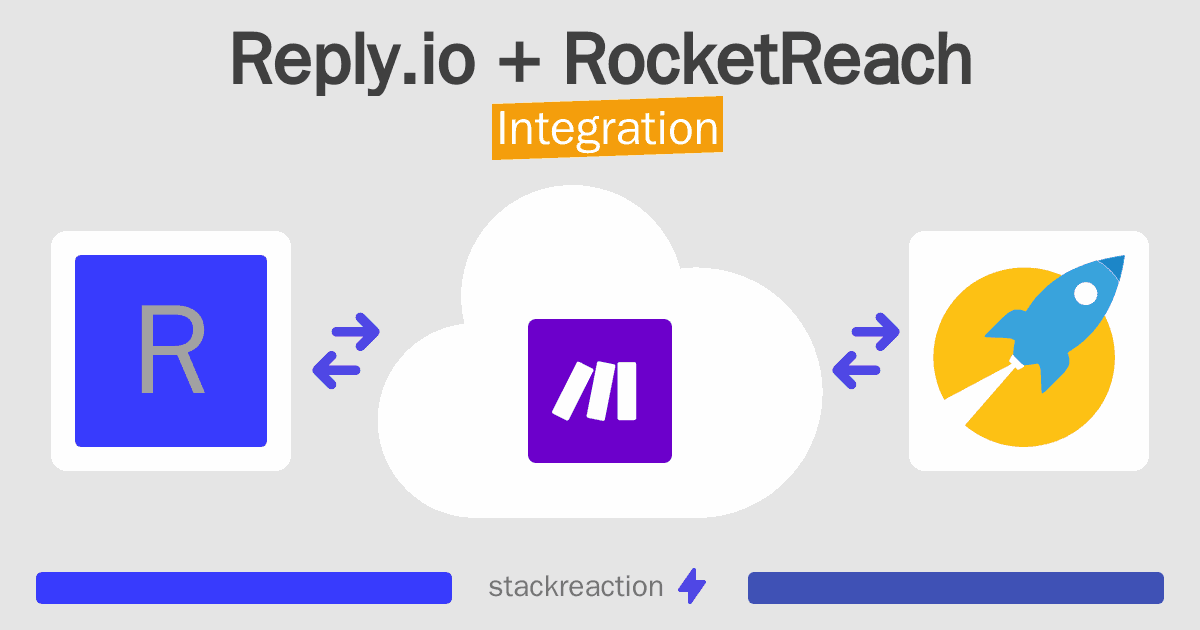How to connect Reply.io and RocketReach
Workflow Automation Platforms supported by Reply.io and RocketReach
Looking for an efficient way to automate your workflow processes between Reply.io and RocketReach? These workflow automation platforms are designed to do just that - all without requiring any coding expertise. Browse through this list to discover the right fit for your business.
- Make.com. Make.com (Integromat) is a powerful automation tool that enables users to connect their favorite apps, services, and devices without any coding skills. With its unique features, users can automate even complex integrations easily and efficiently, saving time and effort. Integromat allows to connect apps and automate processes in a few clicks.
- Pipedream. Pipedream is a low code integration platform for developers, which helps to connect APIs fast.
- Pricing Options
- FreemiumFree Trial
- Starting From
- 10$/month
- Pricing Options
- FreemiumFree Trial
- Starting From
- 19$/month
Reply.io and RocketReach Integration Price
If you have decided to use a workflow automation tool to connect Reply.io and RocketReach, it's important to carefully analyze the cost of integration.
For those seeking pricing information on automation services that support Reply.io and RocketReach integration, we have collected and organized the data for you. Check out our table below for details based on 100, 1K, 10K and 100K basic automations per month.
A basic automation is a scenario, which includes a trigger and a single action. An example of simple automation is: every time form is filled send an email.
| Automation Platform | 100 | 1K | 10K | 100K |
|---|---|---|---|---|
Volume: 100 Plan: Free $0 Volume: 1K Plan: Core $10.59 Volume: 10K Plan: Core $18.82 Volume: 100K Plan: Core $214.31 | $0 Free | $10.59 Core | $18.82 Core | $214.31 Core |
Volume: 100 Plan: Free $0 Volume: 1K Plan: Free $0 Volume: 10K Plan: Basic $29 Volume: 100K Plan: Business $499 | $0 Free | $0 Free | $29 Basic | $499 Business |
Triggers and Actions supported by Reply.io and RocketReach
Integrating Reply.io and RocketReach involves identifying an automation that aligns with your business request.
Automations serve as a workflows that connect your applications, automating a business process. The Trigger acts as the event that initiates the automation, while the Action denotes the executed event.
We have gathered all available Triggers and Actions from diverse Workflow Automation Platforms so that you can evaluate integration possibilities and make an informed decision on integrating Reply.io with RocketReach.
When this happens
Select a Trigger
No triggers found
Do this
Select an Action
How to setup Reply.io and RocketReach integration
Step 1: Choose a Workflow Automation Service that supports the integration of Reply.io with RocketReach. Choose automation platform
60 seconds
60 secondsStep 2: Authenticate Reply.io and RocketReach on the chosen automation service.
60 seconds
60 secondsStep 3: Pick a suitable Trigger for Reply.io that will kickstart your automation workflow. Explore Triggers
15 seconds
15 secondsStep 4: Choose an appropriate Action to be executed by RocketReach once your automation scenario is triggered. Explore Actions
15 seconds
15 secondsStep 5: Configure the data that is exchanged between Reply.io and RocketReach.
120 seconds
120 secondsStep 6: Complete your integration by testing and publishing it. You're all set!
More integrations to Reply.io
If you're looking for new ways to automate tasks with Reply.io, check out our list of other popular integrations. Reply.io Integrations
More integrations to RocketReach
If you're looking for new ways to automate tasks with RocketReach, check out our list of other popular integrations. RocketReach Integrations
Reply.io and RocketReach integration Diagram

Frequently Asked Questions
Does Reply.io integrate with RocketReach?
- You can connect Reply.io and RocketReach automatically using no-code Workflow Automation Tool. Use Make.com or Pipedream to link Reply.io and RocketReach.
Can you Integrate Reply.io and RocketReach for free?
- Yes, you can use the free plan of Make.com or Pipedream to connect Reply.io to RocketReach for free, albeit with some limitations.

